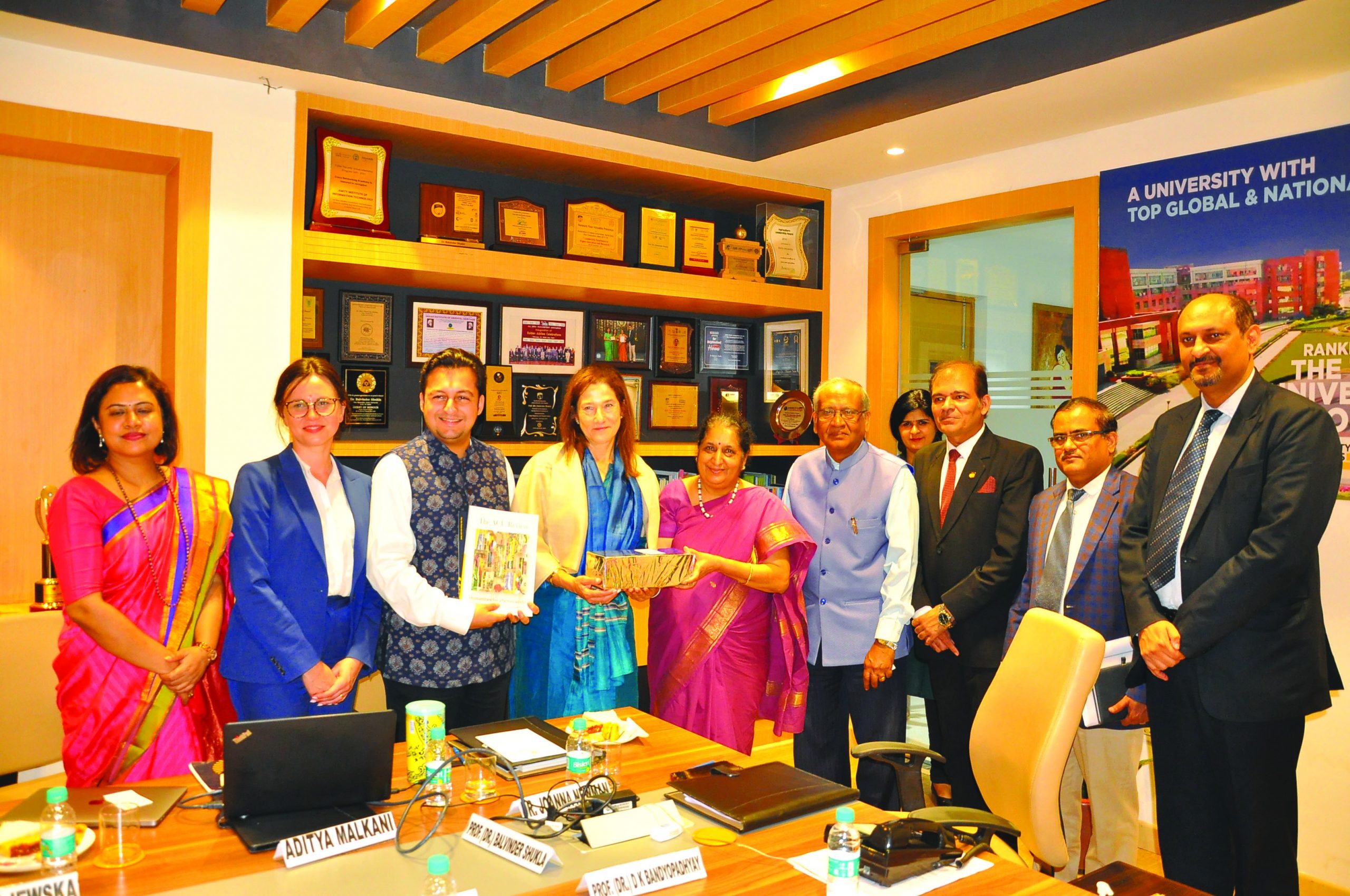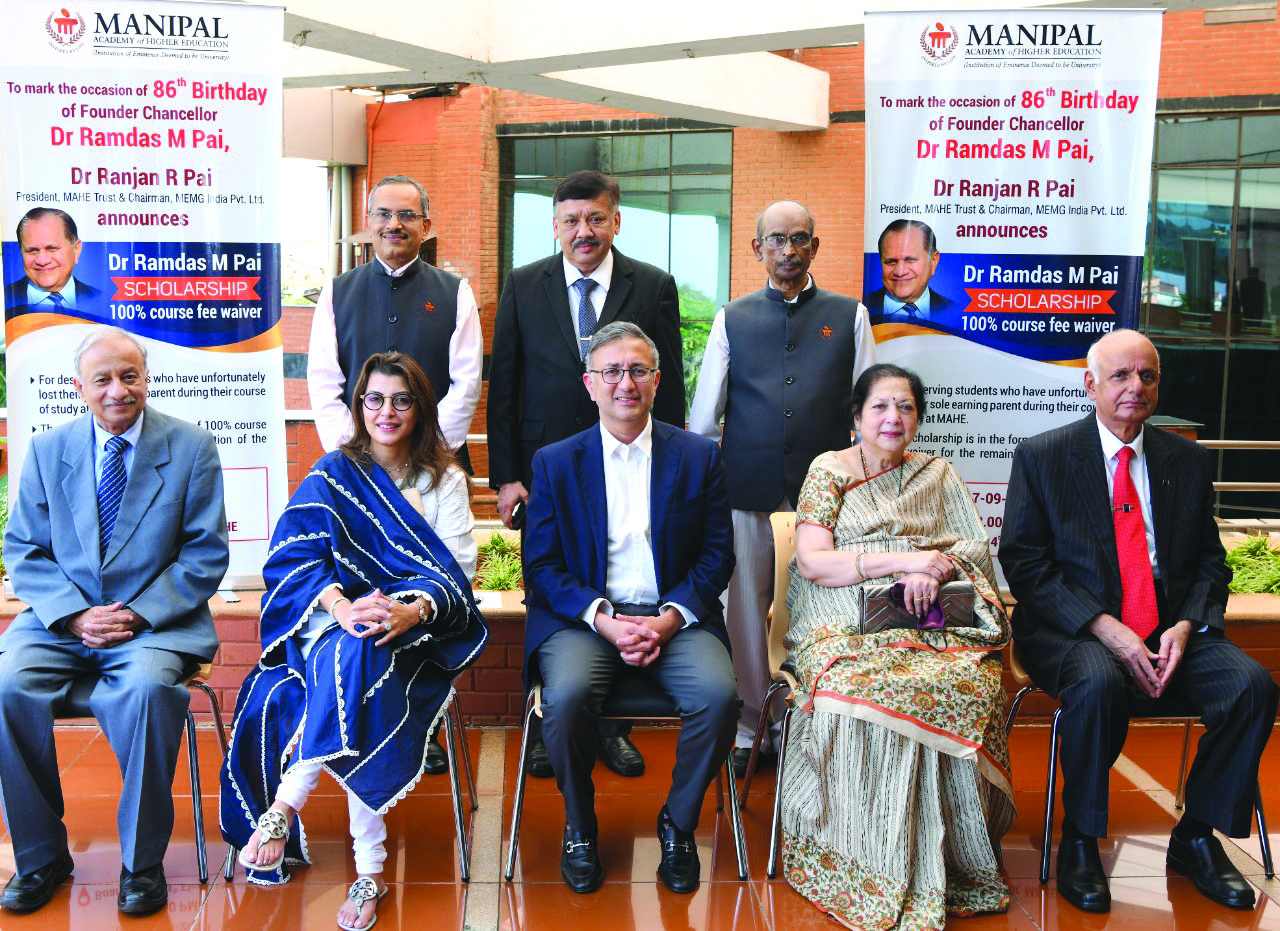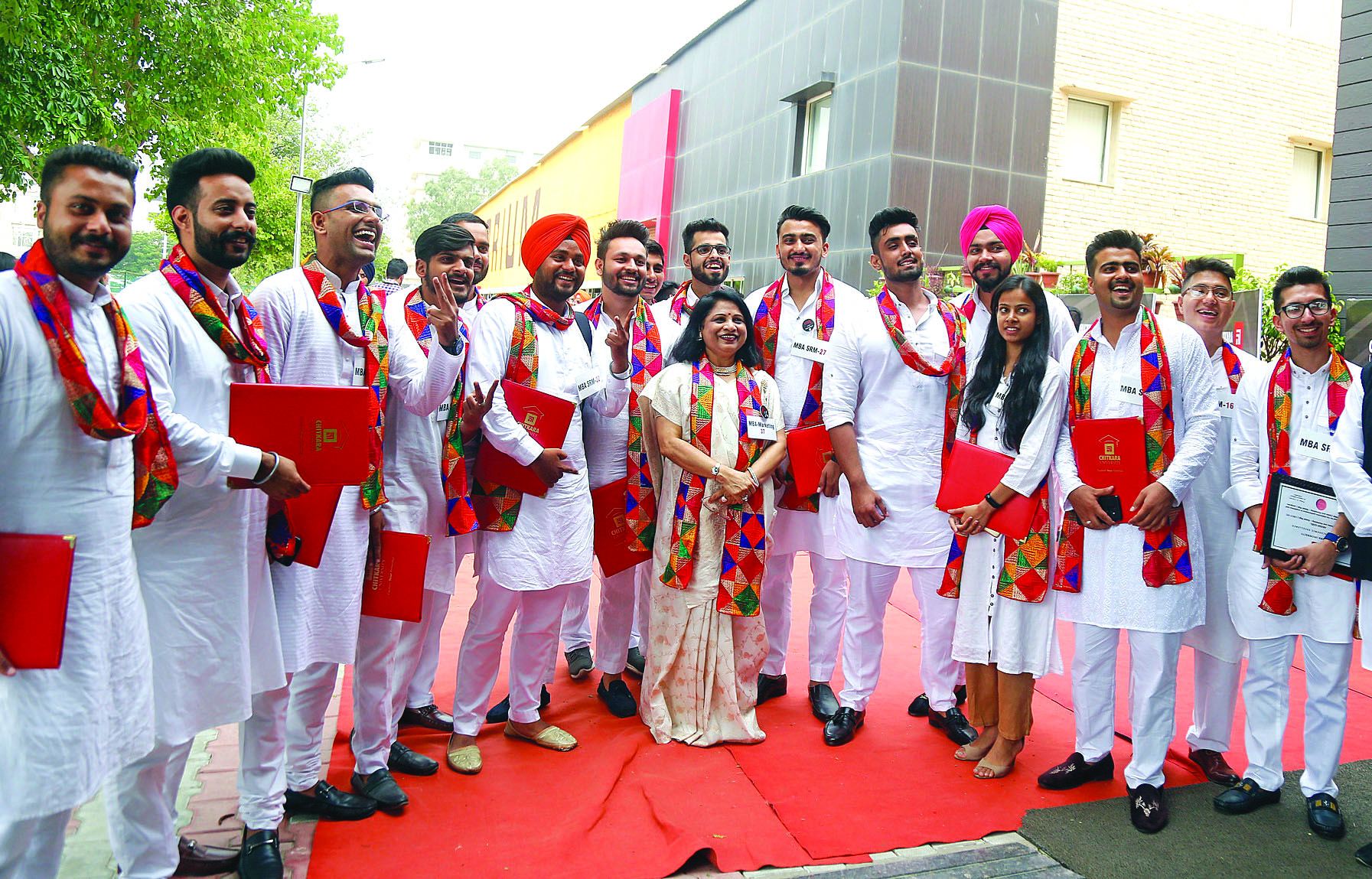India’s top-ranked private multidisciplinary universities 2024-25
India’s new genre multidisciplinary universities benchmarked against the world’s best are a breath of fresh air with the potential to check, if not stop, the annual migration of an estimated 8 lakh school and college-leavers for higher education abroad.

Indian university graduates: unemployability spectre
Since the National Education Policy (NEP) 2020, based on the Kasturirangan Committee draft report, recommended transformation of India’s 45,473 undergrad colleges and 1,168 universities into multi-disciplinary higher education institutions (HEIs), multi-disciplinary HEIs have become the flavour of the season. It’s the good doctor’s — actually an outer space scientist — contribution to India’s higher education system that today every college principal and university vice chancellor has drawn up plans to transform the HEI under her care into a multi-disciplinary institution.
In retrospect, one wonders why it took the neta-babu brotherhood which controls Indian higher education with an iron hand, so long to figure out that by definition, a ‘university’ is a higher education institution providing advanced learning across a wide range of subjects and disciplines. The Oxford English dictionary defines a university as “a high-level educational institution in which students study for degrees and academic research is done”. Yet perhaps the latter day Wikipedia definition is more accurate — “an institution of higher (or tertiary) education and research which awards degrees in several academic disciplines”.
India’s ancient and much eulogised universities — Nalanda and Taxila — were reportedly such multi-disciplinary HEIs in which students were free to study subjects across disciplines of their choice. Nevertheless post-independence India’s omniscient politicians and bureaucrats who controlled industry, business, education and everything else through Soviet-style five-year plans, licensed a large number of public single discipline HEIs — IITs, NITs, IIMs, AIIMS, engineering and medical colleges and universities. As a result, IITs teach engineering subjects, IIMs business management, medical colleges, medicine.
The few private sector HEIs such as BITS-Pilani and Manipal Academy of Higher Education were restricted to teaching engineering and medicine and allied subjects and despite being granted ‘deemed university’ status, were not permitted to describe themselves as universities simpliciter. They were obliged to always describe themselves as ‘deemed-to-be-universities’ on pain of being derecognised.
Moreover, public and private HEIs — colleges and universities — were encouraged to focus on teaching. For research, the Central government established 38 national laboratories and 39 outreach centres under the aegis of a Soviet-inspired Council for Scientific & Industrial Research (estb.1942) as “an institutional arrangement to keep the Science, Society and Industry on the same page”. Unsurprisingly, CSIR quickly metamorphosed into a giant bureaucratic organisation with a well-established pecking order. Over the past 82 years, it hasn’t produced any earth-shattering or game-changing invention despite its head count having grown to 7,683.
Against this backdrop of a complete hash of higher education in post-independence India, it’s also unsurprising that the country’s 45,473 colleges and 1,168 universities are certifying millions of ‘tunnel vision techies’ with little understanding of wider development issues confronting the nation, and/or unemployable arts, science and commerce graduates with 40 percent ‘educated unemployed’ having been the norm for half a century, if not more.
Unsurprisingly again, India’s sole HEIs in the annual QS World University Rankings 2024 are IIT-Bombay at #149 and IIT-Delhi #197. In the Times Higher Education Rankings 2024, India’s highest ranked university is the Indian Institute of Science, Bangalore (estb.1908) ranked in the 251-300 band. On the other hand, five Chinese universities are ranked among the QS Top 100.
Although this situation is acceptable to the country’s head-in-sand, ivory tower academics who have a ready list of Indian exceptionalism — Indian universities are teaching rather than research institutions; they have to practice reservations/affirmative action; tuition fees contribute less than 5 percent of expenditure — it’s not acceptable to your editors.
We believe that India’s low rates of annual economic growth, poor farm and factory productivity; adverse ICOR (incremental capital output ratio); high unemployment, talent migration and widespread poverty are closely connected with poor quality education dispensed within the country’s colleges and universities. Therefore since 2013, EducationWorld has been publishing annual rankings of India’s best — of a bad lot — undergrad colleges and universities.
The objective of the annual EducationWorld India Higher Education Rankings is not just to aid and enable school and college-leavers to choose the most aptitudinally suitable college/university, but also to prompt institutional managements to improve across a broad range of parameters of higher education excellence. Even if academics within the academy are content to remain big fish in small ponds, this is not in the national interest. HEIs need to improve their score under all parameters of higher education excellence and benchmark themselves with the world’s most respected and admired higher education institutions.
In these circumstances, India’s new genre multi-disciplinary private universities which ab initio have benchmarked themselves with the world’s best, are a breath of fresh air with the potential to check, if not stop, the annual migration of an estimated 8 lakh school and college-leavers for higher education abroad.
Although poo-poohed by left academics accustomed to government over-subsidisation of higher education as “too commercial”, post-liberalisation private universities which are more affordable than foreign — especially western HEIs — are attracting students in large numbers. There’s increasing awareness that they offer more organic education at substantially lower tuition fees, which even if high by the standards of rock-bottom fees of public HEIs, is more affordable because of the belated availability of long-term education loans.

Amity VC Dr. Balwinder Shukla (centre): pushing knowledge boundaries
The league table of India’s most preferred private multi-disciplinary universities has been dominated for the past four years by Amity University, Noida (estb.2005), the flagship varsity of the Amity Group which comprises 11 autonomous universities in India and 11 abroad with an aggregate enrolment of 200,000 students. Although olde world academics tend to attribute Amity, Noida’s popularity to its intensive mass media, especially television ad campaigns, it’s noteworthy that none of them have challenged the data-based claims relating to its high ranking in international QS and THE league tables.
Evidently, the sample respondents interviewed for EWIHER 2024-25 are impressed with this go-getting private university which has 37,000 students mentored by 2,100 faculty on its muster rolls. They have awarded this 20-year-old institution top scores under the parameters of faculty competence, industry interface, placement and leadership, and high scores under research and innovation, infrastructure and internationalism.
“The continuous recognition of Amity, Noida as India’s #1 private multidisciplinary university is testament to the unrelenting effort of our dedicated faculty to deliver globally comparable world-class education that stimulates research and innovation, intellectual curiosity, and industry readiness capabilities of our students. This top rank will motivate us to further elevate the educational experience we offer to consolidate our position as India’s premier multi-disciplinary university,” says Dr. Balwinder Shukla, an alumna of IIT-Kharagpur and Queen’s University, UK, with three decades of experience in academia appointed vice chancellor of this flagship HEI of the Amity Group in 2014.
Dr. Shukla believes the excellent reputation that Amity, Noida has acquired is attributable to the top management’s focus on academic excellence, diverse programmes, research focus, industry connect, state-of-the-art infrastructure, vibrant campus life that promotes holistic development, values-based education, global outlook and commitment to continuous improvement. This is confirmed by Amity U’s high scores under related parameters.
In particular, Shukla singles out AU’s commitment to research and innovation as the prime focus area for this top-ranked varsity. “While we are proud of our scores in several parameters in the EducationWorld rankings, our top score in the area of research and innovation is most satisfying because it reflects the quality and quantity of research publications produced by our faculty and students. It also demonstrates our commitment to pushing the boundaries of knowledge and contributing meaningfully to our chosen fields,” says Shukla, ascribing the top score under the parameter of leadership to the “inspiring example” of Chancellor Dr. Atul Chauhan.

MAHE Chancellor Ranjan Pai (centre) & VC Dr. M.D. Venkatesh (left)
In the EW India 2024-25 league table of private multi-disciplinary universities, there’s been no rearrangement of seating at top table. Amity is followed by the Manipal Academy of Higher Education (MAHE) at #2 with joint top score under the research and innovation parameter, and the young Ashoka University, Sonipat (estb. 2014), which has recently transformed into a multi-disciplinary varsity with the introduction of a range of STEM subjects, ranked #3. ICFAI Foundation for Higher Education, Hyderabad at #4 (4) and Amrita Vishwa Vidyapeetham, Coimbatore #5 (3) complete the Top 5.
A noteworthy feature of the EW 2024-25 league table of private multi-disciplinary universities is that the new-age formerly liberal arts Ashoka University, Sonipat which debuted in the multi-disciplinary universities league table last year has not only retained its #3 rank of 2023-24, but is awarded top scores under the parameters of curriculum and pedagogy and industry interface. Dr. Somak Raychaudhury, the polymath (Presidency, Kolkata, Oxford and Cambridge grad with teaching experience in Harvard, and former Director of the Inter-University Centre for Astronomy & Astrophysics, Pune) who took charge as vice chancellor at AU in 2023, is very satisfied with the rapid progress of this new genre varsity which has quickly transformed into a multi-disciplinary HEI.
“A decade ago, we set out to create a truly world-class university in India, and we have made significant progress towards that goal. We have consistently aimed at achieving global standards under all parameters of higher education excellence — outstanding faculty, unique pedagogy, cutting-edge research and partnerships with leading universities worldwide. Therefore, it’s especially gratifying that your sample respondents have awarded us top score under the parameters of pedagogy and curriculum; industry interface which has enabled us to focus on applied learning and impart 21st century skills to students, and internationalism which reflects our global perspective,” says Dr. Raychaudhury.
 Under Raychaudhury’s stewardship, AU has drawn up an ambitious subject diversification and expansion plan. “To evolve into India’s premier interdisciplinary research and teaching university, we will be expanding our campus to almost five times its current size. Simultaneously, we are investing heavily in the sciences, including bioscience which will be the dominant discipline of the 21st century. In the next few years, we expect to grow from our current number of 2,800 students to 8,000. We will also be creating great impact through our Centres of Excellence and partnerships with highly reputed organisations and universities around the world,” adds Raychaudhury.
Under Raychaudhury’s stewardship, AU has drawn up an ambitious subject diversification and expansion plan. “To evolve into India’s premier interdisciplinary research and teaching university, we will be expanding our campus to almost five times its current size. Simultaneously, we are investing heavily in the sciences, including bioscience which will be the dominant discipline of the 21st century. In the next few years, we expect to grow from our current number of 2,800 students to 8,000. We will also be creating great impact through our Centres of Excellence and partnerships with highly reputed organisations and universities around the world,” adds Raychaudhury.
The EW Top 10 table of private multidisciplinary universities is completed by NMIMS University, Mumbai at #6 (ranked #4 in 2023-24), Shiv Nadar University, Gautam Buddh Nagar #7 (5); Chitkara University, Chandigarh #8 (9), Symbiosis International (Deemed University) Pune #9 (8) and the Kalinga Institute of Industrial Technology (KIIT), Bhubaneswar which has made a great leap forward to #10 (14). With this rearrangement of seats at the Top 10 table, the closed shop, incommunicado Christ University, Bengaluru has lost its Top 10 table seat even as St. Joseph’s University, Bengaluru awarded autonomy by UGC last year, has debuted at #14. Likewise, the previously unranked Somaiya Vidyavihar University, Mumbai has made an impressive debut as India’s #15 private multidisciplinary university.

Dr. Madhu Chitkara (centre): growing research culture
The steady progress of Chitkara University in the EW league table of new genre private multidisciplinary varsities has enthused Dr. Madhu Chitkara, an alumna of Delhi and Punjab universities who promoted the eponymous institution in 2010. In 2019-20, CU was ranked #33. Since then it has matured into a multidisciplinary varsity with an aggregate enrolment of 20,000 students. This year, it has consolidated its ranking within the Top 10 at #8 (cf. #9 in 2023-24).
“I am quite satisfied with our steady progress in the EW league tables. We consciously work towards improving under each EW parameter and rather than worrying about competition, set our own targets. I am proud of CU’s growing research and innovation culture. In its 2024 global rankings, THE has short-listed us among the top eight emerging global universities for research. And I am also pleased to note the high score for research awarded to us by EW sample respondents. In CU, we are working hard to establish a research culture because good researchers will always be good teachers,” says Dr. Chitkara.
It’s noteworthy that although private multidisciplinary universities, which have acquired new popularity after the National Education Policy (NEP) 2020 enjoined all higher education institutions to begin the process of transforming into multidisciplinary HEIs, universities which may be modestly ranked in the 100-strong EW 2024-25 league table may well be heavyweights within their host states many of whom are larger and more populous than sovereign European countries.
Thus, Chitkara University ranked India #8 is top-ranked in Punjab (pop.31 million); Krea University, Sri City, India #11 is #1 in Andhra Pradesh (pop.93 million); the research-intensive Shoolini #12 India is top-ranked in Himachal Pradesh (pop.7 million) and Amity University, Kolkata ranked India #24 is West Bengal’s #1 private multidisciplinary university.
Therefore, school and college-leavers who don’t wish to travel far from home for higher education would be well-advised to check out the state rankings of private multidisciplinary varsities also provided in this issue of EducationWorld.
Also read: India’s top private engineering & technology universities 2023-24

















Add comment